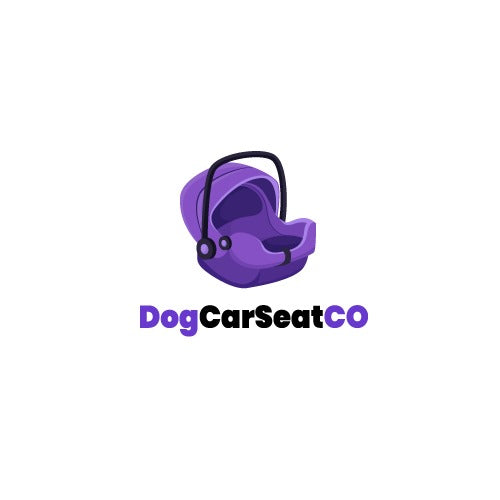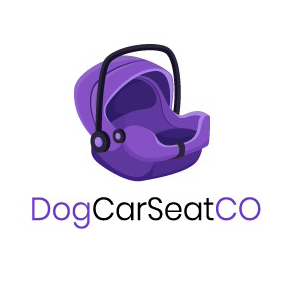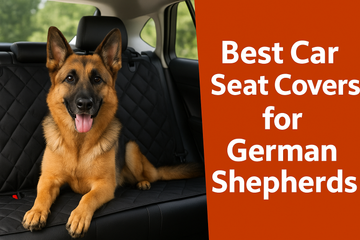
When you're hitting the road with your dog, ensuring they are secured in a dog car seat can be lifesaving. A loose pup can become a major distracting force while you navigate through traffic, making it harder to drive safely.

Investing in a dog car seat in the UK can help ensure your buddy stays safe throughout the trip. Whether you opt for a small dog car seat, medium dog car seat, or large dog car seat, pairing it with a sturdy harness and buckles that integrate with your vehicle's seatbelt system can greatly prevent injuries during an accident. Without proper protection, a 50-pound dog can be projected with an impact force of up to 2,000 pounds in a crash at just 25mph. According to Allianz Life Insurance Company, unrestrained pets can become dangerous projectiles, putting both people and other pets at risk. In places like Minnesota, there's even a law prohibiting loose dogs in cars; getting pulled over by a police officer could mean a ticket for distracted driving or obstructing vision if you're seen wrangling your loose dog on the road.
The Safest Way to Travel with Dogs

Windows Up for a Healthy Pup
It may be tempting to let your dog poke their head out the window to enjoy the breeze, but this habit can pose serious risks. While your four-legged friend may look happy, flying debris like dirt, rocks, or dust from moving cars can cause eye injuries or even a scratch on the cornea, resulting in painful and costly vet visits. Additionally, prolonged exposure to flapping air at high speeds can lead to the ears becoming irritated, swollen, or infected. For long car rides, it’s best to limit how far you lower the windows to ensure your pooch stays safe on the road.
For more tips on how to keep your dog comfortable during car rides, check out this helpful guide on making your dog more comfortable in the car.
Know Your Dog’s Speed Limits
Every pup reacts differently to car travel. Some jump with excitement at the thought of a car ride, while others are fearful and anxious. If your doggo struggles with vehicle travel, creating a safe space in the car is key. Following tips from your vet or an animal behaviorist can improve their comfort. In some cases, they may recommend situational medications for temporary relief from anxiety. Gradually introducing your dog to car travel and using techniques to desensitize them can turn their terrified reactions into more manageable behaviors, making your trip smoother and safer.
Arriving at Your Destination
Once you’ve reached your stop, taking precautions is essential. Regular, frequent car rides can help your dog develop positive routines. Avoid letting your dog ride shotgun as it's not the safest choice. As responsible pet parents, prioritizing safe travel habits helps ensure both your dogs and their feline friends arrive at each destination without issues.
Plan Mealtimes
When preparing for a car ride with your dog, it's important to manage their feeding schedule carefully. A full stomach can lead to motion sickness, resulting in vomiting and a mess to clean. To avoid this, consider caring for your dog's digestion by watching their feeding times. Feed them well before your departure and plan a meal break during longer trips. After feeding, allow time for your dog to settle before getting back in the car. This keeps your focus on the road without added stress.
Exercise Your Dog
A well-exercised dog is a calm passenger. Before your trip, take your dog on a walk or engage them in vigorous games like fetch or tug-of-war. This helps burn excess energy and makes it easier for your dog to settle in the car. A tired dog is less likely to become a nuisance and more likely to sleep through the trip, making the journey smoother for everyone.
If you're preparing for a road trip, don't forget to check out 15 must-have dog car seat essentials for safe and happy travel to ensure your dog's comfort and safety on the road.
Take Short, Pleasant Trips
If your dog only associates road trips with visits to the vet's office or the groomer, it may develop negative feelings about travel. Ease their stress by introducing positive experiences like outings to the dog park or beach or fun training classes. These short rides provide exciting socialization opportunities and help build a better association with travel. Start with initial trips that include cuddles, their favorite toys, and a trusted helper to offer comfort.
Schedule Water and Potty Breaks
Keeping your dog hydrated and comfortable during car rides is vital. Bring fresh, clean water in a portable dish so they can drink when needed. Plan regular potty breaks every few hours, giving your dog a chance to go. Research your route for convenient rest stops and pack poop bags to keep the journey tidy.
Dog Car Safety
For safety, dogs should ride in the backseat rather than the front seat to avoid injury from air bags. Use protective car covers to safeguard your upholstery and install a barrier to stop your dog from jumping forward, which can create a dangerous distraction while driving. Keeping your dog properly positioned ensures a safer trip for both your pet and the people in the road.
Securing Your Dog for Car Travel
Buckling up isn't just for humans; proper safety precautions are essential for dogs, too. Secure your pet in the backseat with belts or harnesses designed specifically for dogs. Depending on your dog's size, consider using a small dog car seat, medium dog car seat, or large dog car seat for added protection. Smaller dogs may benefit from carriers that are securely strapped in place to reduce distractions and prevent jumping forward, making the trip more enjoyable for all.
Keeping Your Dog’s Info in the Car
For added security, ensure your dog wears a collar with updated identification tags and a registered microchip. These steps are vital if your dog becomes lost. Keep emergency paperwork, medications, food, and water in the car. Essentials like collapsible bowls, familiar toys, and a first-aid kit should be kept on hand to handle unexpected situations.
Dogs Sticking Their Heads Out of Windows
As cute as it may seem, letting dogs ride with their heads out of windows is dangerous. The motion can expose them to debris or tempt them to jump out. Instead, keep the rear windows slightly closed to prevent your dog from sticking any part of their body outside while still enjoying the breeze.
Never Leave Dogs Alone in Cars
Leaving dogs alone in cars can be extremely risky, especially in hot weather. Even with windows cracked, temperatures can rise rapidly. Good Samaritan laws may permit bystanders to break into cars to rescue distressed animals. Beyond heat risks, there's also a danger of theft, and pets being stolen from parked cars is, unfortunately, common. Always bring your dog with you or ensure someone can watch them when you step away.
To learn more about the safety concerns around dogs in the front seat and other important facts every dog owner should know, check out this article on myths vs. facts about dogs sitting in the front seat.
Provide Comfort Items
Familiar items can help your dog feel secure during drives. Bring their favorite blanket or toy that carries a familiar smell. This sense of comfort can reduce anxiety and offer a distraction from barking or whining. Chew toys are ideal for occupying your dog during longer trips. Choose special items that hold their interest for the maximum duration, encouraging a positive association with car travel.
Treats motion Sickness and Anxiety
Puppies and some adult dogs may struggle with sickness or anxiety during trips. Consult your vet about possible medications for nausea or try natural remedies like flower essences, calming treats, or pheromones. A gentle scent can mimic a nursing mother's warmth, easing nerves. Apply these remedies on a spray, crate, bandana, or collar for best results. Specialized anxiety gear like a calming vest or shirt can also apply gentle pressure to help your pet relax if necessary.
Additional Tips for Comfort
Music can make the journey smoother for your dog. Experiment with different volume levels and styles to find what helps your dog sleep peacefully — some dogs prefer classical music, while others may tolerate heavy metal better. Try different crate locations in the car to find what suits your dog best — some may prefer a covered crate, while others prefer it uncovered. Additionally, consider a forward-facing booster harness for added comfort and stability during travel. If your pet struggles with an upset tummy, small adjustments like these can make a big difference.
8 Car-Safety Tips for Driving with Your Dog

- Schedule regular stops so your dog can stretch their legs, use the bathroom, and burn off some energy.
- Stay aware of your dog's surroundings, as unexpected sights or sounds may trigger anxiety.
- Keep your pet away from open windows or crowded people on the street.
- Start with shorter journeys to build your dog's comfort in the car.
- If your dog is prone to motion sickness, avoid feeding it right before the trip.
- Slowly increase the length of your trips to prevent stress.
- Plan to feed your dog at least a few hours before starting your journey.
- Bring their favorite blanket or toy to make the ride feel familiar and safe.





